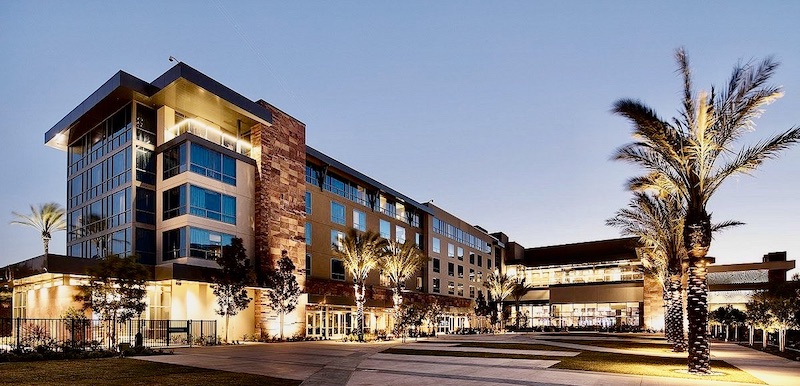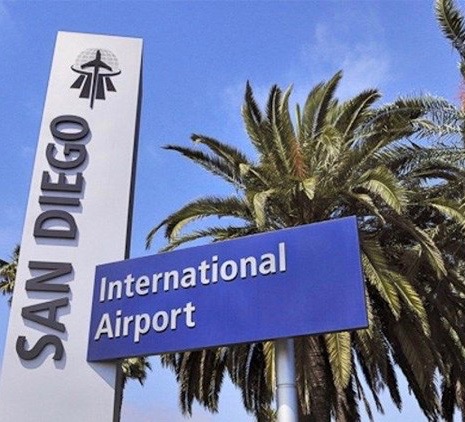Daily Business Report: Monday, Aug. 15, 2022
Which bills did California lawmakers kill?
And which ones survived?
By Ben Christopher | CalMatters
Most of the time, California lawmakers deliberate, debate and decide bills out in public for every Californian to see.
That wasn’t the case last week.
In simultaneous marathon hearings on Thursday, the appropriations committees in the Assembly and Senate rattled through hundreds of bills in a single discharge of rapid-fire legislating. Many proposals lived to see another day. Among them: Gov. Gavin Newsom’s proposal for new courts to compel more homeless individuals to seek mental health and substance abuse treatment, and bills to strictly limit the use of solitary confinement in California jails and prisons, allow for the composting of human remains and increase family leave payments for lower-wage workers, though it wouldn’t take effect until 2024.
But many other closely-watched bills came to an unceremonious end, killed in one of Sacramento’s most opaque lawmaking processes. They included a Republican-backed bill that would have capped copays for insulin, a California Medical Association-backed proposal making it easier for doctors to approve procedures and prescriptions without first getting permission from an insurance company, and a bill to allow prosecutors to go after social media companies for knowingly addicting children.
It’s called the suspense file. For months, the appropriations committees, tasked with assessing the fiscal impact of any bill outside the annual budget, gather any legislation with more than a negligible price tag and put it to the side. Then twice a year, after legislative leaders decide which bills live and which die behind closed doors, they announce the results in a single hearing. In most cases, no public votes are taken and no debates are held.
Top Photo: The state Capitol in Sacramento on July 6, 2022. (Photo by Rahul Lal, CalMatters)
Top Tech Awards coming Sept. 22 to Snapdragon Stadium
More than 160 San Diego technology executives have been nominated for the 15th annual Top Tech Awards, an event celebrating technology leadership and innovation in San Diego. Winners will be announced at the event on Thursday, Sept. 22, from 4 to 8p.m. at San Diego State University’s newly constructed Snapdragon Stadium.
The community is invited to join the annual awards ceremony and celebration presented by Cox Business. The event will feature an awards presentation, tacos and craft beer, music, dancing, dueling pianos, and even a complimentary Cox Lounge Shoe Shine service—all while networking with San Diego’s most innovative leaders in technology. Tickets are on sale now at the Top Tech Awards San Diego website.
Ticket Pricing:
Through Sept. 1 – $100 per ticket;Sept. 1-20 – $125 per ticket; Sept. 20 to the day of the event – $135 per ticket.Parking at the venue will be $15 per car.
Postcards go out to registered voters
The Registrar of Voters has mailed over 1.9 million postcards to registered voters in San Diego County listing voting options for the Nov. 8, 2022, Statewide General Election.
Every active registered voter will automatically receive a ballot in the mail and will have three options for returning that ballot: by mail, to one of the Registrar’s secure ballot drop box locations, or at any vote center. Ballots begin going out in the mail on Oct. 8, giving voters nearly a month to mark their ballot and return it before Election Day.
Voters also have the choice to vote in-person at any one of over 200 vote centers located across the county, which will be open over multiple days. Elections are no longer a one-day event, and there is no need to wait until Election Day to vote.
The Registrar’s office anticipates opening 132 ballot drop box locations starting Oct. 10. Over 200 vote centers will open for four days starting Nov. 5. Nearly 40 of those vote centers will open earlier, Oct. 29, giving voters 11 days to cast their ballots in-person.
A list of ballot drop box and vote center locations will be available by Sept. 9 at sdvote.com.
All San Diego County emergency departments
are now officially senior-friendly
San Diego County has become the first in the nation to earn a regionwide “senior-friendly” emergency department accreditation for all 18 of its hospitals.
The geriatric emergency department accreditation means that emergency room visits will be more effective and less stressful for local seniors. Elderly patients make nearly one-third of all local emergency room visits. The geriatric emergency departments are designed to treat and care for seniors and the unique medical complications they may present when they come to emergency rooms. Those include frailty and mobility issues, dementias and the use of multiple medications for chronic medical conditions.
The ERs also feature staff trained and dedicated to emergency care for older adults including nurses, case managers and social workers. The accreditation means 100 percent of seniors in the county will have access to senior-friendly emergency room care. Officials said only about 15 percent of seniors have that access nationwide.
Hala Madanat appointed vice president
for Division of Research & Innovation at SDSU
Hala Madanat, interim vice president for the Division of Research & Innovation and former director of the San Diego State University School of Public Health, has been named to the permanent vice president role. Her appointment became effective August 1.
Madanat is responsible for elevating university research across disciplines, along with the university’s creative activities. She works closely with campus academic deans and vice presidents to promote interdisciplinary work and research while driving innovative practices in support of faculty and student research, student engagement and community impact.
Madanat joined the SDSU faculty in 2008 in the School of Public Health and later served as the chief research officer at SDSU, overseeing all aspects of the university’s research endeavors, including the San Diego State Research Foundation. Prior to SDSU, she served in faculty positions at Utah Valley University and Brigham Young University. Madanat currently serves on numerous boards including the San Diego Economic Development Corporation, Downtown San Diego Partnership, Connect San Diego, and Biocom California.
Brookie Best named dean of Skaggs School
of Pharmacy and Pharmaceutical Sciences
Brookie Best has been named new dean of the Skaggs School of Pharmacy and Pharmaceutical Sciences, succeeding James McKerrow, who stepped down in June after serving as dean for seven years.
Best is a familiar face. She joined Skaggs faculty in 2003, just one year after the school opened its doors to its first class, rising to professor of clinical pharmacy and pediatrics and associate dean for pharmacy education.
Her contributions span the school’s missions of research, education and clinical care.
She has mentored more than 130 students and been named Professor of the Year by the Associated Students three times.
Her research, which includes 20 years of designing and conducting pediatric and obstetric pharmacokinetic clinical trials, includes studying maternal/fetal and pediatric clinical pharmacology, exploring the effects of anti-HIV drugs in pregnant women, children and non-pregnant adults, and drugs used to treat Kawasaki disease, the leading cause of acquired heart disease in children.
How Sanford Burnham Prebys
is helping the monarch butterfly
To help protect the monarch butterfly, which was recently declared endangered, Sanford Burnham Prebys is planting milkweed on campus. Planting milkweed and other butterfly-friendly flowers along monarch migration routes is a key strategy to support this iconic California species and prevent further decline.
“In the ’80s, we all took the butterflies for granted,” said Eva Engvall, professor emerita at Sanford Burnham Prebys. Professor Engvall’s comments on the decline of the monarch were immortalized several years ago in a printed mural on campus. “Thirty years later, we never see them.”
The International Union for the Conservation of Nature (IUCN) recently added the monarch butterfly (Danaus plexippus) to its list of endangered species. The distinctive orange-and-black butterflies are a staple of Californian wildlife, but their numbers have drastically declined over the last 30 years.
Although monarchs are known for their heroic migration to Mexico and back each year, those that live west of the Rocky Mountains need not travel so far—many of their overwintering sites are located right here in California, with others scattered throughout West Coast states.
New Grossmont College supply chain certificate
program to prep students for vital jobs
The Grossmont-Cuyamaca Community College District (GCCCD) is launching a new program this month in the critically important field of supply chain logistics. GCCCD has partnered with business professionals across the region to develop the program. The program kicks off in the fall semester, which begins Aug. 22.
The 18-unit certificate program in supply chain logistics will be offered for credit.
“The COVID-19 pandemic taught us the need to adapt quickly to changes in the economy,” said Chancellor Lynn Neault. “This new program in supply chain logistics will help train professionals who can help firms manage the challenges they continue to face.”
Disruptions in the supply chain have become common when placing orders in a store or online. Companies across the economy have struggled to keep up with consumer demands. Production and shipping delays have been driven by shortages in labor caused by the COVID-19 pandemic, global cyberattacks, fluctuations in the price of major commodities, diverging standards and regulations, tougher environmental regulations, an economic slowdown in China, and other factors.
Free short-term classes prepare students
for jobs at MiraCosta College
There are still a few things that are free like taking a free short-term class or two at MiraCosta College this fall.
Whether you’re interested in becoming a property manager, a teacher’s aide, an office clerk, or want to learn more about using Google apps, MiraCosta College is offering free short-term classes to help train students for the job market.
Whether you’re interested in becoming a property manager, a teacher’s aide, an office clerk, or want to learn more about using Google apps, MiraCosta College is offering free short-term classes in fall 2022 to help train students for the job market.
Students can earn a certificate in just a few weeks or no more than a semester. Classes begin Aug. 22, and all are being offered online.
The Affordable Housing Management certificate provides students with the tools and skills to be successful in the property management industry with an emphasis on affordable housing. Through a partnership with the San Diego Housing Federation, students will work directly with mentors from the housing industry.
Qualcomm, GlobalFoundries
to expand U.S. Chip manufacturing
Qualcomm has entered into an agreement with GlobalFoundries that will more than double their existing long-term manufacturing for chips used in 5G transceivers, Wi-Fi, automotive, and ioT connectivity. Qualcomm chips will be produced in GlobalFoundries’ factories in the U.S., Germany, Singapore, and France.
DoD awards OrPro Therapeutics
$2.1 million medical research grant
OrPro Therapeutics has been awarded a $2.1 million grant from the Department of Defense’s Congressionally Directed Medical Research Program for research into the human enzyme thioredoxin’s potential to treat respiratory diseases in military personnel. Over the next 12 months, OrPro will use the funds to conduct several studies on the enzyme’s effectiveness against viral lung injury.
Marketing software startup Cordial raises $50 million
Downtown San Diego-based Cordial has raised a $50 million Series C round to broaden its marketing and data management platform. Cordial’s platform allows clients like Forbes and Eddie Bauer to collect data and interactions from customers for better personalized and automated emal, SMS, and mobile campaigns.
New high-resolution study
on California cliff erosion released
The first study to analyze California’s coastal cliff retreat statewide using high-resolution data has found that cliffs receded faster in the north than elsewhere in the state during the study period.
But the study, which covered 866 kilometers (538 miles) of cliffs, detected erosional hotspots in central and Southern California as well.
“It’s probably the largest high-resolution cliff erosion study ever conducted, and provides the first detailed erosion rates for several parts of the state,” said coastal geomorphologist Adam Young of Scripps Institution of Oceanography at UC San Diego. Young and Zuzanna M. Swirad of the Polish Academy of Sciences in Warsaw recently published their study in the journal Geomorphology.
Data from that study — funded by the California Ocean Protection Council and California Department of Parks and Recreation plus previous research funded by California Sea Grant — are now available on the website California Coastal Cliff Erosion Viewer.
Tribal gaming operators generate
record $39 billion in fiscal year 2021
43 casinos make 52 percent gross gaming revenues
By Steve Bittenbender
Tribal gaming enjoyed a record-breaking year in fiscal year 2021, federal officials announced earlier this week. However, a deeper look at the data provided by the National Indian Gaming Commission (NIGC) showed that few operators reaped most of the benefits.
The country’s tribal casinos and other venues reported gross gaming revenues (GGR) of $39 billion for the fiscal year. That represented a 40 percent improvement over the $27.8 billion won in the fiscal year 2020, which was affected severely by COVID-19. It also is a 13 percent jump from the 2019 fiscal year GGR.
COVID-19 still had an impact on the tribal gaming community. Simermeyer noted the country endured a record high number of closures.
The commission noted the disparity that exists among tribal gaming entities. For example,
8 percent of the tribes reported their gaming enterprises generated revenues of at least $250 million for the fiscal year. That’s compared to 55 percent that reported a GGR of less than $25 million.
That top 8 percent, which equates to 43 operators, accounted for 52 percent of all tribal GGR last year, while the bottom 55 percent produced just 6 percent.
In fiscal year 2020, just 4 percent of operators reported revenues of $250 million or more. Those with GGR totals of less than $25 million accounted for 64 percent of the operators.
From a regional perspective, all eight of the commission’s regions reported at least a 28.3 percent increase from 2020. The Rapid City, SD region reported a 56 percent jump. The casinos in Montana, North Dakota, South Dakota, and Wyoming posted GGR totaling $372.6 million.
Sacramento once again was the most lucrative region, with the tribal venues in California and Northern Nevada generating $11.9 billion in revenues. The DC region, which encompasses all tribal gaming outlets in Alabama, Connecticut, Florida, Louisiana, Mississippi, New York, and North Carolina, reported a total GGR of $8.1 billion.
To Hovland’s point about recovery, while five regions reported gains of at least 9.8 percent compared to 2019, three of the NIGC’s regions still have yet to return to pre-pandemic revenue levels.
The Rapid City region was down 1.1 percent from its 2019 total. Casinos in the St. Paul region, which includes Indiana, Iowa, Michigan, Minnesota, Nebraska, and Wisconsin, generated $4.8 billion last year. That’s down $135 million, or 2.7 percent, from its 2019 total.
In the Phoenix region, which covers Arizona, Colorado, New Mexico, and Southern Nevada, the $3.2 billion in GGR for 2021 was nearly $58 million less than its 2019 tally.
The above article originally appeared in casino.org






